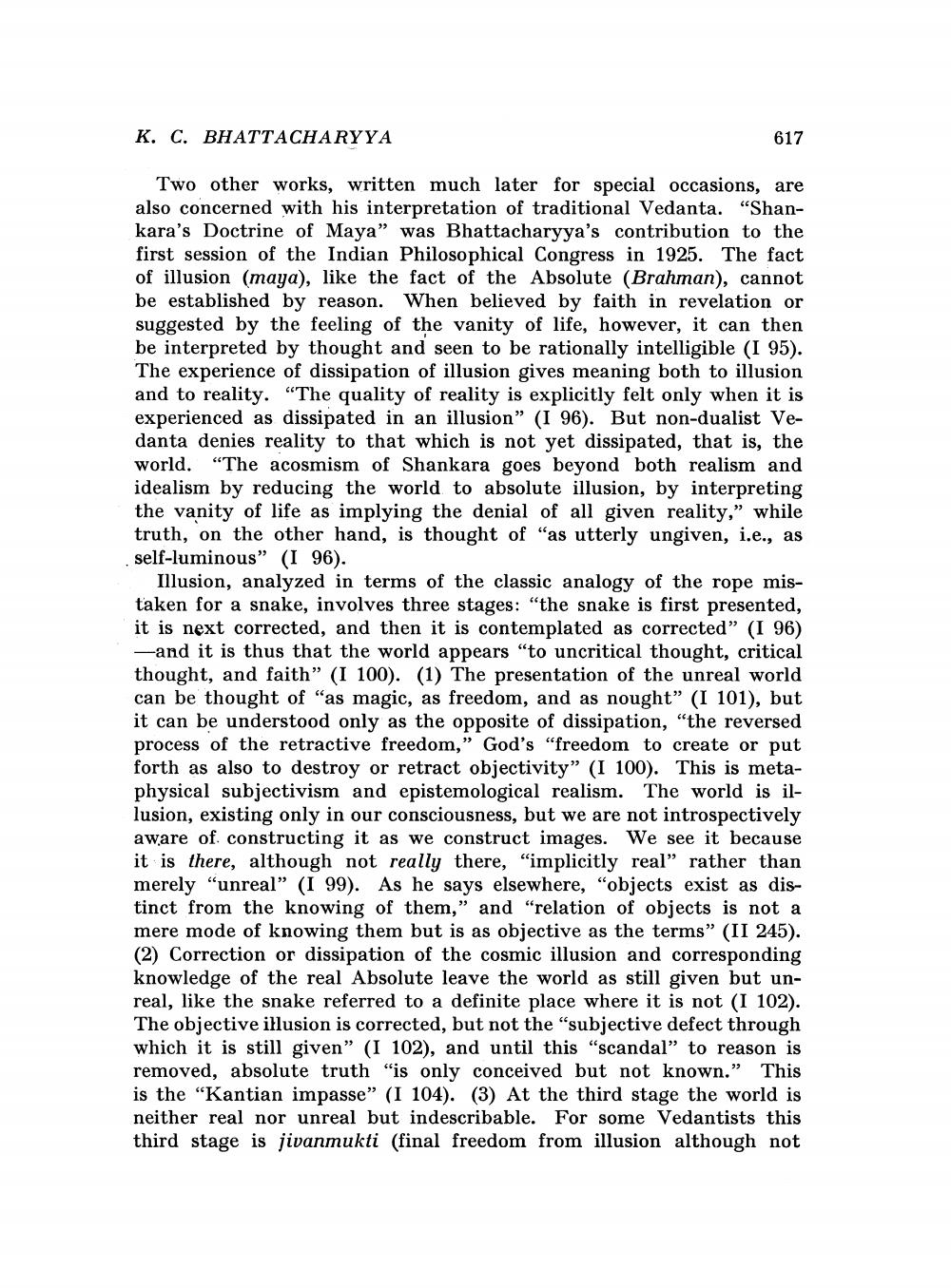________________
K. C. BHATTACHARYYA
617
Two other works, written much later for special occasions, are also concerned with his interpretation of traditional Vedanta. "Shankara's Doctrine of Maya" was Bhattacharyya's contribution to the first session of the Indian Philosophical Congress in 1925. The fact of illusion (maya), like the fact of the Absolute (Brahman), cannot be established by reason. When believed by faith in revelation or suggested by the feeling of the vanity of life, however, it can then be interpreted by thought and seen to be rationally intelligible (I 95). The experience of dissipation of illusion gives meaning both to illusion and to reality. “The quality of reality is explicitly felt only when it is experienced as dissipated in an illusion" (I 96). But non-dualist Vedanta denies reality to that which is not yet dissipated, that is, the world. “The acosmism of Shankara goes beyond both realism and idealism by reducing the world to absolute illusion, by interpreting the vanity of life as implying the denial of all given reality," while truth, on the other hand, is thought of "as utterly ungiven, i.e., as self-luminous" (196).
Illusion, analyzed in terms of the classic analogy of the rope mistaken for a snake, involves three stages: "the snake is first presented, it is next corrected, and then it is contemplated as corrected” (I 96) -and it is thus that the world appears "to uncritical thought, critical thought, and faith" (I 100). (1) The presentation of the unreal world can be thought of "as magic, as freedom, and as nought" (I 101), but it can be understood only as the opposite of dissipation, "the reversed process of the retractive freedom," God's "freedom to create or put forth as also to destroy or retract objectivity” (I 100). This is metaphysical subjectivism and epistemological realism. The world is illusion, existing only in our consciousness, but we are not introspectively aware of. constructing it as we construct images. We see it because it is there, although not really there,"implicitly real" rather than merely "unreal” (I 99). As he says elsewhere, "objects exist as distinct from the knowing of them," and "relation of objects is not a mere mode of knowing them but is as objective as the terms" (II 245). (2) Correction or dissipation of the cosmic illusion and corresponding knowledge of the real Absolute leave the world as still given but unreal, like the snake referred to a definite place where it is not (I 102). The objective illusion is corrected, but not the "subjective defect through which it is still given” (I 102), and until this "scandal” to reason is removed, absolute truth "is only conceived but not known." This is the "Kantian impasse” (1 104). (3) At the third stage the world is neither real nor unreal but indescribable. For some Vedantists this third stage is jivanmukti (final freedom from illusion although not




